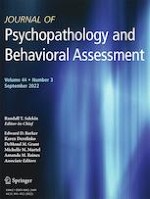02-04-2022
Consistently Inconsistent Working Memory Performance Among Children with ADHD: Evidence of Response Accuracy Variability (RAV)
Gepubliceerd in: Journal of Psychopathology and Behavioral Assessment | Uitgave 3/2022
Log in om toegang te krijgenAbstract
Heterogeneity in cognitive performance, once regarded as noise, is now considered a causal mechanism or core deficit of ADHD and its related symptoms in most etiological models of the disorder. Previous research on cognitive performance variability has documented increased heterogeneity in response latencies using reaction time data. In contrast, variability in response accuracy remains understudied. The present study is the first to examine Response Accuracy Variability (RAV) among children with ADHD. Children with ADHD (N = 54) and typically developing children (N = 50) completed phonological working memory tasks with four set size conditions. RAV was calculated for each set size using the adjusted coefficient of variation (ζ). Results from a mixed model ANOVA indicated that children with ADHD evinced significantly greater variation in working memory performance relative to typically developing children when engaged in tasks within their cognitive capacity (i.e., set sizes 3 and 4), whereas all children exhibit similar, high levels of variability on tasks that exceeded their cognitive capacity (i.e., set sizes 5 and 6). Findings are aligned with the extant literature in documenting consistently inconsistent cognitive performance among children ADHD.
